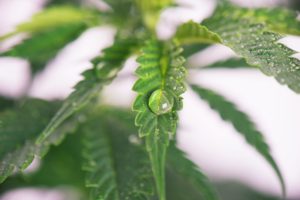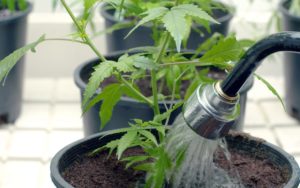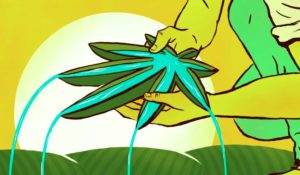 First and foremost, it is important to know if you are complying with all regulations regarding water use for growing commercial cannabis. As water scarcity increases globally, many agricultural-based businesses like cannabis cultivators seek ways to conserve water. Commercial agriculture uses approximately 80% of the state’s ‘developed water,’ or water that’s moved from its natural source via pipes and aqueducts for businesses and homes.
First and foremost, it is important to know if you are complying with all regulations regarding water use for growing commercial cannabis. As water scarcity increases globally, many agricultural-based businesses like cannabis cultivators seek ways to conserve water. Commercial agriculture uses approximately 80% of the state’s ‘developed water,’ or water that’s moved from its natural source via pipes and aqueducts for businesses and homes.
The exact amount of water it takes to grow cannabis depends on several factors such as the location, size of plants, type of soil, strain, etc. There is always a more efficient, environmentally-friendly option available; it just depends on if it’s a viable, cost-effective solution for a company. With the problem growing exponentially over time, water efficiency is imperative.
There are various factors that affect water efficiency like plant size, humidity, wind speed, solar radiation, soil types, chemovar, and water temperature. Complying with cannabis cultivation policies in each state is also essential. These are guidelines that establish laws for environmental protection, specifically the protection of water quantity and quality.
Plants use water to transport nutrients by absorbing them and then releasing them into the air through the process of transpiration. To get the most significant plant yield, cultivators control the temperature and lighting, encouraging the plant to consume more water for nutrients. This water consumption makes cannabis a water-intensive crop.
Water Conservation Solutions

However, because many cultivators grow cannabis in a controlled environment, reducing water waste is possible. In places where cannabis is still grown outside, many grow operations plant their crops in containers to conserve water. It’s also more efficient to irrigate plants earlier in the morning or just before sunset.
There is still unnecessary water waste in the form of excess water that evaporates from the plant. Growers can reduce this by eliminating overwatering. One of the smartest conservation techniques is dehumidifying the growing area to capture condensation for reuse. Adding nutrients to the captured condensation allows growers to use it again. This process enables cultivators to minimize water waste significantly. Reclaiming water is also cost-effective and helps Return-on-Investment (ROI).
Recapturing water can be done simply if the business already uses a controlled environment. These systems have piping from the dehumidifying and cooling systems and pipes that draw the water outside or down a drain. Instead, the water can be drained into a holding tank. After that, the grow operation would need to invest in a filtration system to remove contaminants from the condensate.
Covering the substrate with a special cloth that acts as thermal insulation is another solution. Other conservation techniques involve covering plants with shading meshes in very hot areas or using products like mycorrhizal fungi or humic acid to improve water absorption efficiency in plants.
Cannabis growers are encouraged to practice sustainability and ensure that they are operating in compliance with laws. Everyone has a responsibility to contribute to solutions for water scarcity.
Summary
 For marijuana growers using municipal water supplies, you must verify that your water is coming from a source that is not federally managed. It is essential to know and follow all regulations regarding water usage and supply source.
For marijuana growers using municipal water supplies, you must verify that your water is coming from a source that is not federally managed. It is essential to know and follow all regulations regarding water usage and supply source.
For example, municipal water supplies in parts of Nevada and Southern California are provided by the Federal Bureau of Reclamation via diversions from the Colorado River and are therefore prohibited for use in cannabis operations.
Every grower, producing cannabis commercially or for personal use, should be sure to track water usage and yield data for each variety of marijuana they grow. Data will help cannabis cultivators determine the perfect balance between maximum water efficiency and achieving the highest yield per plant.
Finding this sweet spot will benefit the bottom line of individual growers and the environment as a whole.
Let us know what you think.




Responses